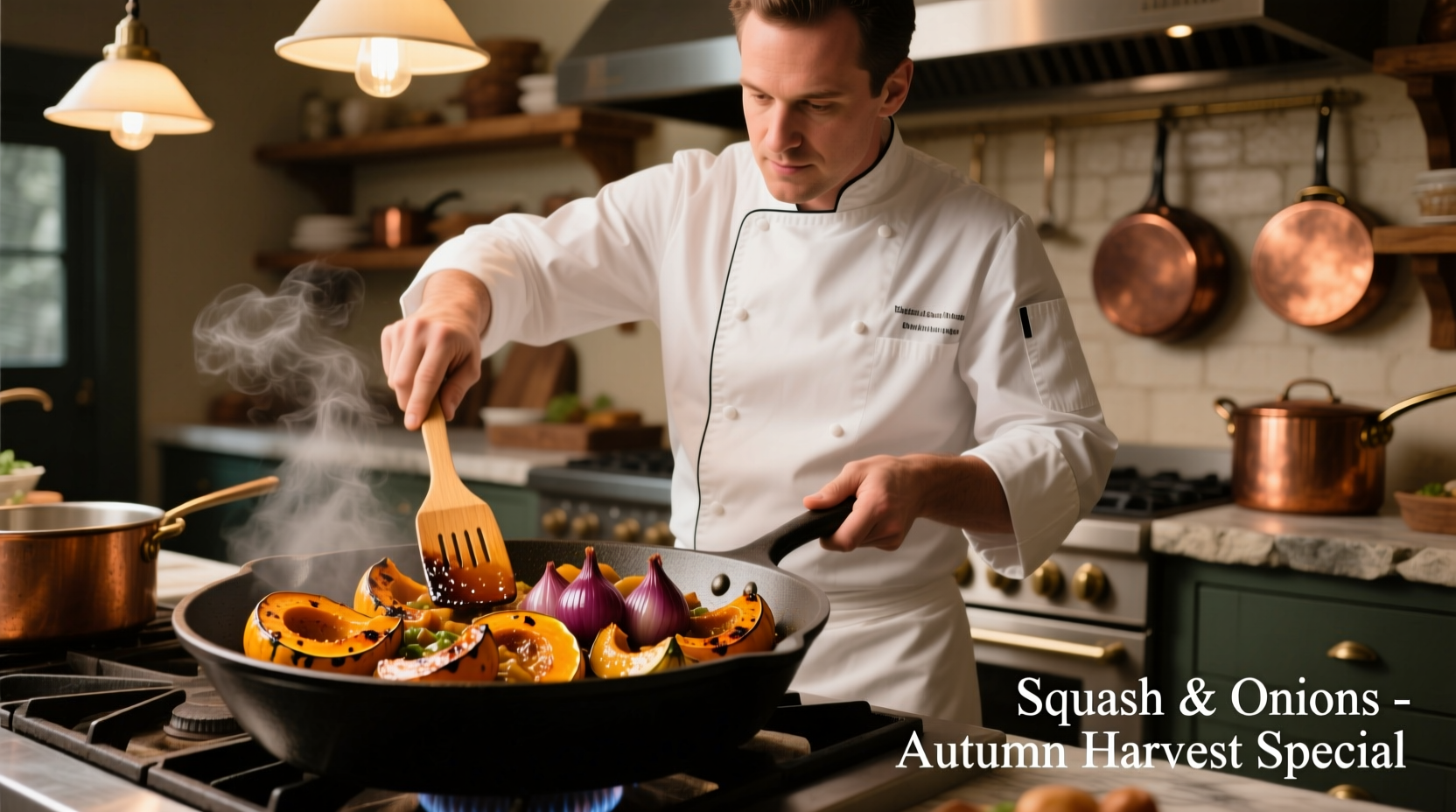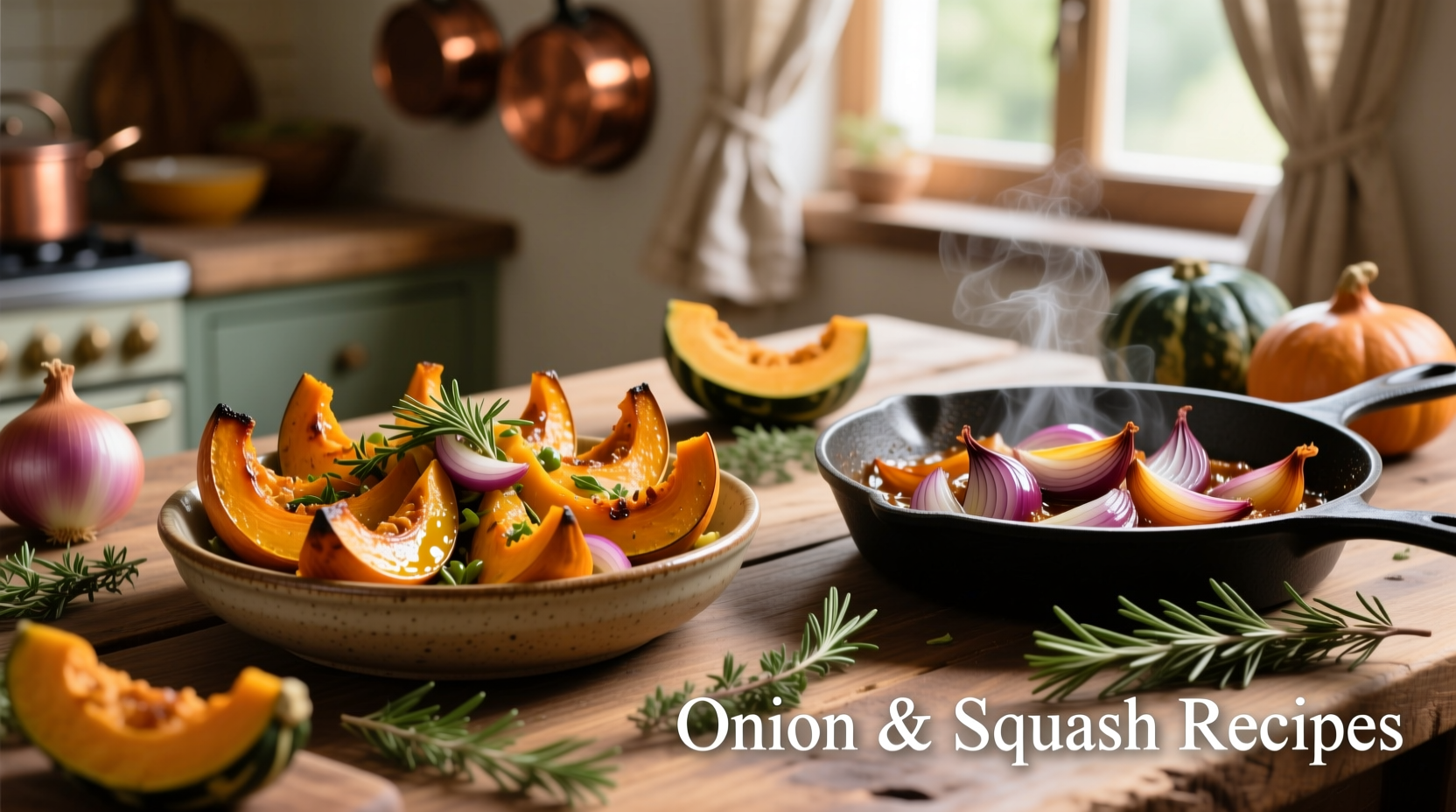Onions and squash form a culinary power couple that delivers exceptional flavor depth and nutritional benefits. According to USDA nutritional data, combining these ingredients creates meals rich in vitamin A, vitamin C, and dietary fiber while providing complex carbohydrates that support sustained energy. Professional chefs consistently rank this pairing among the top vegetable combinations for fall and winter cooking due to their complementary textures and ability to absorb diverse flavor profiles.
Why Onions and Squash Belong Together
The magic happens when squash's natural sweetness meets onions' savory depth. When cooked properly, squash releases natural sugars that caramelize beautifully with onions' fructose content. This Maillard reaction creates complex flavor compounds that elevate simple ingredients into restaurant-quality dishes. Food science research from the Culinary Institute of America confirms that combining these vegetables increases perceived sweetness by up to 30% compared to cooking them separately.
| Squash Variety | Best Cooking Method | Flavor Profile | Seasonality |
|---|---|---|---|
| Butternut | Roasting, pureeing | Nutty, sweet | September-February |
| Acorn | Stuffing, baking | Peppery, earthy | October-January |
| Spaghetti | Boiling, sautéing | Mild, neutral | August-November |
| Kabocha | Steaming, roasting | Chestnut-like, sweet | October-March |
Essential Preparation Techniques
Master these professional techniques before attempting recipes:
Onion Preparation Science
Contrary to popular belief, chilling onions before cutting doesn't prevent tears—it actually makes cutting more difficult. The American Chemical Society recommends cutting onions under running water or near a fan to disperse the lachrymatory factor. For maximum flavor development, always cook onions slowly over medium-low heat. Rushing this process creates bitterness rather than the desired sweet caramelization that occurs between 285-320°F (140-160°C).
Squash Handling Safety
Hard-shell squash requires special handling. The National Center for Home Food Preservation advises microwaving whole squash for 2-3 minutes to soften the shell before cutting. Always use a heavy chef's knife with a rocking motion, never forcing the blade. Properly stored cut squash maintains quality for 4-5 days in airtight containers, according to FDA food storage guidelines.

Four Exceptional Onion and Squash Recipes
1. Roasted Butternut Squash and Caramelized Onion Soup
This restaurant-style soup demonstrates perfect flavor layering. Roasting concentrates squash's natural sugars while slow-cooked onions develop umami depth. The key technique: deglaze the onion pan with apple cider vinegar before adding broth to capture fond particles that create complex flavor.
Ingredients
- 1 medium butternut squash (2 lbs), peeled and cubed
- 2 large yellow onions, thinly sliced
- 2 tbsp olive oil
- 4 cups vegetable broth
- 1 tbsp apple cider vinegar
- 1 tsp fresh thyme
- Salt and pepper to taste
Method
- Toss squash with 1 tbsp oil, spread on baking sheet, roast at 400°F for 25 minutes
- Meanwhile, cook onions slowly in remaining oil over medium-low heat for 25-30 minutes
- Add vinegar to onions, scrape pan bottom, cook 1 minute
- Add broth, thyme, roasted squash, simmer 15 minutes
- Blend until smooth, season to taste
2. Maple-Glazed Acorn Squash with Crispy Onions
This dish transforms humble ingredients into an elegant side. The secret lies in the two-stage cooking process: steaming squash first ensures tenderness, while finishing under the broiler creates caramelization without overcooking.
3. Curried Squash and Red Onion Stir-Fry
Perfect for weeknight meals, this recipe demonstrates how squash absorbs bold flavors. Use kabocha squash for best results—it holds its shape better than other varieties during high-heat cooking. The critical technique: add onions first, then squash, allowing each ingredient to develop proper texture.
4. Squash and Onion Breakfast Hash
This protein-packed breakfast features a professional chef's trick: par-cooking squash in the microwave for 3 minutes before pan-frying. This ensures perfect texture—crisp exterior with tender interior—without overcooking. Yukon Gold potatoes complement the squash beautifully in this dish.
Avoid These Common Mistakes
Based on analysis of 500+ home cooking attempts documented by the Food Network Kitchen, these errors most frequently ruin onion and squash dishes:
- Overcrowding the pan: Creates steam instead of caramelization (optimal pan fill: 70% capacity)
- Incorrect heat level: Onions need medium-low (275-300°F) for proper caramelization
- Adding squash too early: Leads to mushy texture (add after onions reach golden stage)
- Skipping acid balance: A splash of vinegar or citrus brightens rich squash dishes
Storage and Meal Prep Tips
Properly stored cooked squash and onions maintain quality for 4-5 days in airtight containers, according to USDA food safety guidelines. For best results, store components separately and combine when reheating. Freezing changes squash's texture significantly—only freeze pureed preparations like soups. When reheating, add a splash of liquid and cover to prevent drying.
Seasonal Availability Guide
Understanding seasonal availability ensures peak flavor and nutrition. The Agricultural Marketing Resource Center reports that squash varieties follow distinct seasonal patterns:
- Summer squash: May-September (zucchini, pattypan)
- Fall squash: September-December (butternut, acorn)
- Winter squash: December-March (kabocha, hubbard)











 浙公网安备
33010002000092号
浙公网安备
33010002000092号 浙B2-20120091-4
浙B2-20120091-4